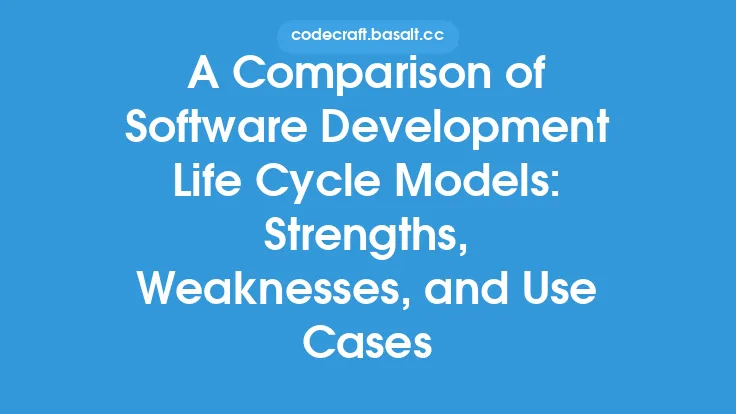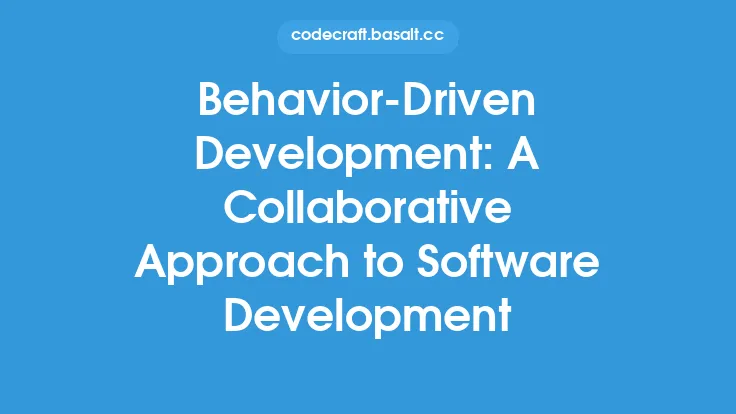The waterfall model is a linear approach to software development that has been widely used in the industry for decades. It is a sequential methodology that follows a phased approach, where each phase is completed before moving on to the next one. This model is also known as the "linear sequential model" or "classic life cycle model." The waterfall model is simple to understand and implement, making it a popular choice for many software development projects.
Introduction to the Waterfall Model
The waterfall model was first introduced by Winston W. Royce in 1970, and it was initially designed for the development of complex systems. The model is based on the idea that software development is a linear process that can be divided into distinct phases, each with its own set of activities and deliverables. The phases of the waterfall model are typically as follows: requirements gathering, analysis, design, implementation, testing, deployment, and maintenance. Each phase is completed before moving on to the next one, and there is no overlap between phases.
Phases of the Waterfall Model
The waterfall model consists of several phases, each with its own set of activities and deliverables. The phases are as follows:
- Requirements gathering: This phase involves collecting and documenting the requirements of the software system. The requirements are gathered from stakeholders, users, and other relevant parties.
- Analysis: In this phase, the requirements are analyzed to identify the functional and non-functional requirements of the system.
- Design: The design phase involves creating a detailed design of the software system, including the architecture, components, and interfaces.
- Implementation: This phase involves writing the code for the software system, based on the design specifications.
- Testing: The testing phase involves verifying that the software system meets the requirements and works as expected.
- Deployment: In this phase, the software system is deployed to the production environment.
- Maintenance: The maintenance phase involves fixing bugs, updating the system, and ensuring that it continues to meet the requirements.
Advantages of the Waterfall Model
The waterfall model has several advantages that make it a popular choice for software development projects. Some of the advantages include:
- Easy to understand and implement: The waterfall model is a simple and intuitive approach to software development, making it easy to understand and implement.
- Predictable and stable: The waterfall model is a linear approach, which makes it predictable and stable. Each phase is completed before moving on to the next one, which reduces the risk of errors and bugs.
- Low risk: The waterfall model is a low-risk approach, as each phase is completed before moving on to the next one. This reduces the risk of errors and bugs, and ensures that the software system meets the requirements.
- Easy to manage: The waterfall model is easy to manage, as each phase has its own set of activities and deliverables. This makes it easy to track progress and ensure that the project is on schedule.
Disadvantages of the Waterfall Model
While the waterfall model has several advantages, it also has some disadvantages. Some of the disadvantages include:
- Inflexible: The waterfall model is a linear approach, which makes it inflexible. It is difficult to make changes to the software system once the design phase is complete.
- High cost: The waterfall model can be a high-cost approach, as it requires a significant amount of time and resources to complete each phase.
- Long development time: The waterfall model can result in a long development time, as each phase is completed before moving on to the next one.
- Limited customer involvement: The waterfall model has limited customer involvement, as the customer is only involved in the requirements gathering phase.
When to Use the Waterfall Model
The waterfall model is suitable for software development projects that have well-defined requirements, a fixed budget, and a tight deadline. It is also suitable for projects that require a high degree of predictability and stability. Some examples of projects that may use the waterfall model include:
- Embedded systems: The waterfall model is suitable for embedded systems, as these systems have well-defined requirements and a fixed budget.
- Safety-critical systems: The waterfall model is suitable for safety-critical systems, as these systems require a high degree of predictability and stability.
- Government projects: The waterfall model is suitable for government projects, as these projects often have well-defined requirements and a fixed budget.
Best Practices for Implementing the Waterfall Model
To ensure the success of a software development project using the waterfall model, it is essential to follow best practices. Some of the best practices include:
- Clearly define the requirements: It is essential to clearly define the requirements of the software system, including the functional and non-functional requirements.
- Create a detailed design: A detailed design is essential to ensure that the software system meets the requirements and works as expected.
- Test thoroughly: Thorough testing is essential to ensure that the software system meets the requirements and works as expected.
- Manage changes carefully: Changes to the software system should be managed carefully, as they can have a significant impact on the project timeline and budget.
Conclusion
The waterfall model is a linear approach to software development that has been widely used in the industry for decades. It is a simple and intuitive approach that is easy to understand and implement. While it has several advantages, it also has some disadvantages, including inflexibility and high cost. To ensure the success of a software development project using the waterfall model, it is essential to follow best practices, including clearly defining the requirements, creating a detailed design, testing thoroughly, and managing changes carefully. By following these best practices, software development teams can ensure that their projects are completed on time, within budget, and to the required quality standards.





